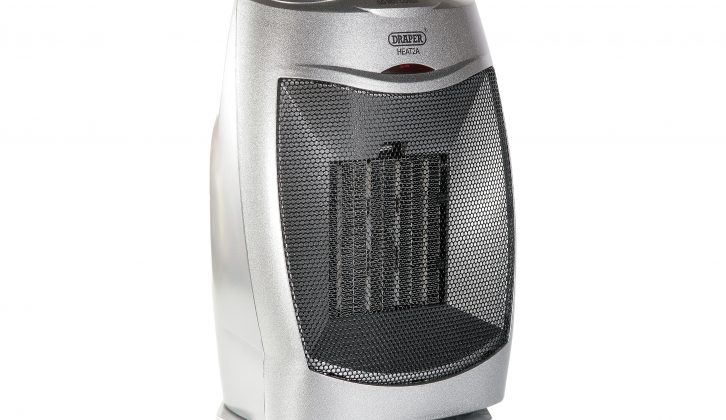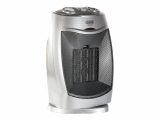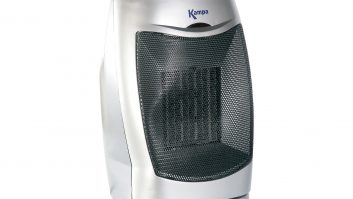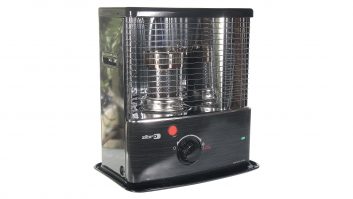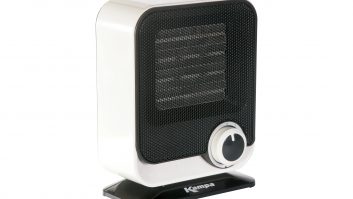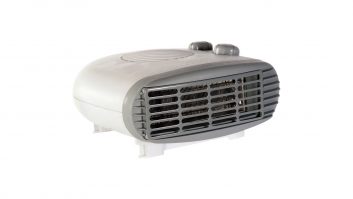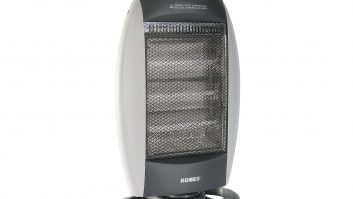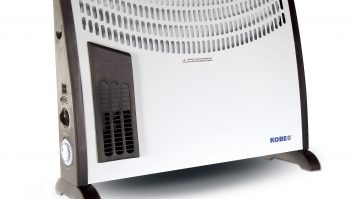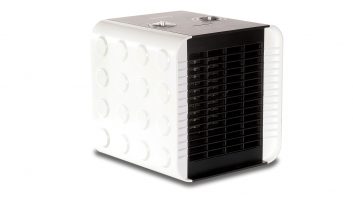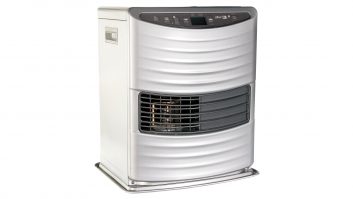Verdict
Come the end of the Practical Caravan Draper 02714 review, our testers gave this product four out of five. With two outputs it is versatile and powerful, and it’s nice and quiet, too.
Pros
It has two output settings
It’s quiet
Cons
It won’t be very effective as a fan in the summer
Winter touring is on the rise – and why not? Caravan holidays all year round, whatever the weather, are increasingly popular as draught-proofing and insulation in caravans have improved, and as more and more campsites have electric hook-ups. Of course, you will want to remain toasty in your tourer, so some kind of heater is a prudent purchase.
So we’ve put some heaters through their paces to help you decide which is your essential bit of winter touring kit. But first you need to decide what type of heater you want.
Electric space heaters take cold air in, heat it, then release it, meaning they gradually heat the space in which they are positioned.
If the caravan is draughty or badly insulated, or if you are looking to warm the awning, heating the air might not be the best option, so a radiant heater is a better idea. These give out invisible infrared rays that travel through the air without warming it, but discharge their thermal energy into whatever’s in their path, such as you. They produce heat you feel right away, but as soon as you turn them off or move away from them, the heat disappears just as quickly.
So, what things do you need to consider when buying a portable heater for your caravan? How much it will set you back and whether it represents value for money are, of course, important. Power is crucial, too. Your heater needs sufficient oomph to cope in very cold conditions, but you must remember that not all hook-ups are 13A or more. Ideally, you’ll buy a unit with an adjustable output, so you can lower or raise its output, depending on the amperage available.
Other factors to bear in mind are ease of position, stability when in use, weight and size. Also, if you’re buying a space heater you’ll appreciate having one with a thermostat – this will turn the heater off when the desired temperature is reached and will switch it back on when the temperature falls, meaning you don’t have to turn the heater on and off all the time.
A bonus is to have a heater with a fan-only mode, then it can also provide cooling in the summer. And although you might want a heater with a greater output, you might like to weigh up the advantages of this against the sometimes intrusive noise that some more powerful units create.
A timer function on your portable heater is useful, plus ensuring there’s good air flow so the heat is spread evenly round your caravan is essential, or else you could end up with hot and cold spots.
So, what did the Practical Caravan review team make of the Draper 02714? At 20cm wide and 30cm high, this heater is a little too big to sit unobtrusively on the floor. Fortunately, if you do catch it accidentally, a switch cuts power the instant the unit is tipped in any direction.
Potential accidents aside, there’s a lot to like with this product. The lower setting of 750W is very hook-up friendly, and the top output of 1500W is more than adequate for most caravans and weather conditions.
In use, the fan is pleasingly quiet and the optional oscillation mode spreads the output very evenly indeed. Still, the blast of air produced – though fine in heating mode – is too wheezy for effective cooling fan use come the summer.
So, what other heaters did we review and how did they perform? Interestingly, we also did a review of the Kampa 1500W, which is very, very similar to this Draper 02714, but a little cheaper. In addition, getting a two-star review was the Argos 415/1364 and receiving three stars were the Dyson AM05, Kampa’s Diddy, the Screwfix 44164, the Kobe KBE-828-0140K and the Zibro RS24 fuel heater. The Dimplex Pro Series Self-Righting heater scored four out of five, as did the Kobe KBE-828-0130K, the Clarke OFR9/90, the Sealey CH2013, the Zibro LC30 (a fuel heater) and the Outwell Etna. However, top of the pile and our group test winner, receiving a radiant five-star rating, was the Sealey CD2013TT.
There’s a lot to like with this product
Technical Specifications
| Width | 20cm |
| Height | 30cm |
| Outputs | 750W and 1500W |
